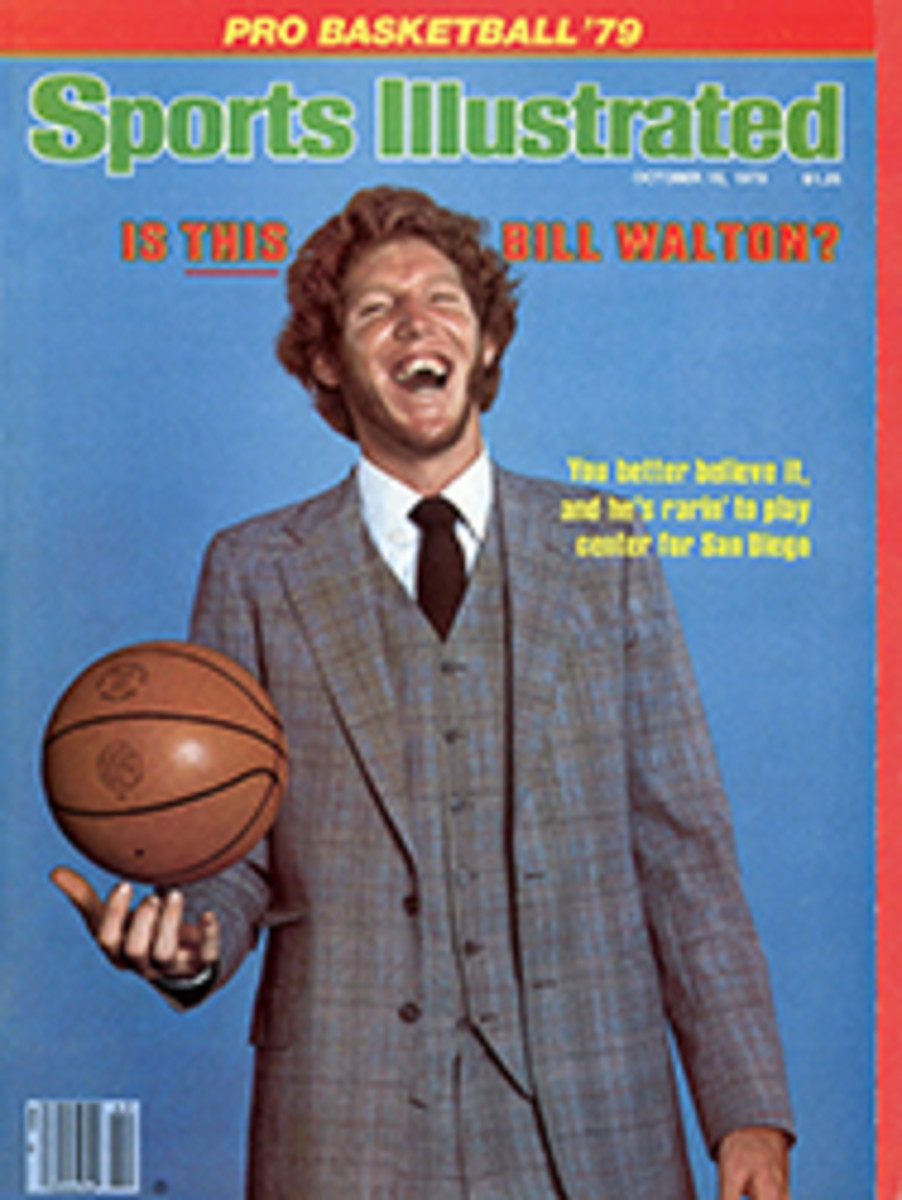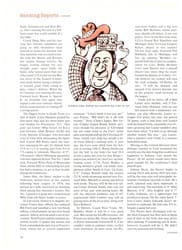
The way to become a good skate
It is impossible to pinpoint the moment when the latest roller skating fad turned into a boom, but a boom it now is. Today more than 30 million Americans are burning up to 360 calories an hour, more or less, depending on whether they are racing, dancing, exercising or just traveling around, and the industry is turning out 300,000 pairs of roller skates a week.
Most of these end up in skating centers. But as skaters become more proficient they invest in their own sets of wheels, sometimes buying the separate components and having a pair custom-made to suit individual needs and tastes. The parts are boots, base plates, wheels and bearings and a toe stop. Made-to-order skates are costly, the cheapest of the custom models going for about $175 compared to between $100 and $125 for a good pair of stock skates.
When selecting a boot, avoid synthetic materials. Leather conforms to the shape of the foot and doesn't trap moisture inside. The boot must fit snugly, with a firm heel grip for control and safety, especially in tight turns. Riedell and Oberhamer boots are tops for craftsmanship and are priced from $40 to $90.
The boot is mounted on a base plate, which used to be known simply as "the skate." Karl Wall, president of Sports International of New England, an equipment distributor, warns that "Equipment without brand names usually denotes inferior quality." When selecting a plate one must look for a durable, strong aluminum alloy that is light in weight yet unbending during jumps and spins. The b
best middle-priced plates are made by Chicago and Sure-Grip. Their prices range from $21 to $95.
The design and weight of a plate depend on the type of skating for which it will be used. A speed-skating plate, for example, is much lighter than a freestyle or hockey plate. The U.S. speed-skating team won more than half of the 16 roller skating events at the recent Pan-Am Games while wearing the Sure-Grip XK-4 plate, but experts contend that the Snyder is the best. "When skaters get as far as Snyders, they know what they want," Wall says. The Snyder is exceedingly well made and designed to allow a number of adjustments in the truck, for freestyle, dancing and figures—for all types of skating, in fact, except speed. Aficionados say that maneuvering is a cinch with this plate and precision bearings. Snyders run from $150 to $200.
Wheels, as everyone must know from the skateboard craze, are now made of polyurethane, which has radically altered the performance and, mercifully, the sound of skates. The once-familiar grating of steel on bumpy pavement has been muted to a barely audible "whoosh." The first polyurethane (or urethane) wheels were used in indoor rinks in the late '60s; now more than 50 companies supply them. Wheels come in three varieties: for indoor, outdoor and—you guessed it—all-purpose indoor-outdoor use. The average skater can get adequate performance from a good set of the indoor-outdoors, though dirt and grime from the street tend to become embedded in the urethane and many rinks won't allow a dirty wheel on indoor surfaces.
Competitive artistic skaters, on the other hand, must use exactly the right wheel for whatever it is they're going to do. For example, for fast tracking indoors, it's important to have a wheel that grips the surface, but a gripping wheel is no good for fast spins.
Most indoor wheels are smaller than outdoor ones and are made of hard urethane or a rubber-type composition called Vanathane. Outdoor wheels are manufactured in varying degrees of softness according to the bounce and resiliency required—high resiliency allows the wheel to go faster and to recover its shape after taking an obstacle. Says Wall of riding on the right urethane wheels, "You feel like a Land-Rover. You can skate over almost everything."
Before the Pan-Am Games the U.S. speed roller team trained in indoor rinks until it was learned that the surface in Puerto Rico was to be concrete. Then they took off for Italy for two weeks to practice on a similar surface, and tested a number of wheels. They selected the bright red, soft urethane Krypto (from Kryptonics), a flexible indoor-outdoor wheel with rebound and strength, for the long-distance outdoor races, and the Vanguard Hugger for the indoor and outdoor events on speed tracks. A set of the former costs from $25 to $50; the latter sell for $80. Two other highly rated indoor-outdoor wheels with plenty of bounce to the ounce are the $35 Vango (by Vanguard) and the $25 Free-Spirit (by Sports International).
Indoor figures, dancing and, especially, competition require a hard yet resilient wheel that is as nearly flawless as possible. The tiniest imperfection can mar the execution of an accurate figure. A good test to see if a wheel is perfectly balanced is to try to trace an exact circle with it. Three-time world freestyle champion Natalie Dunn of Bakersfield, Calif. won a gold in the freestyle at the Pan-Am Games on Rannalli wheels, which sell for $48. The majority of the other top U.S. contestants in the artistic events were on Vanguard's All American Dream wheels, also $48. The Excaliburs and the International Figure Concords, made by the same company, are priced from $90 to $100.
Urethane, ultra-smooth and quiet though it may be, does not get all the credit for the revival in roller skating. The two ball bearings inside each of the new wheels are a big factor in the performance of modern skates, too. The most efficient bearings are those that have been sealed or semi-sealed. The latter are closed only on one side and require cleaning and lubrication from time to time, whereas the sealed bearings are lubricated and then completely sealed in by a thin piece of metal, keeping them free of grime and dirt and permanently oiled. They are not expensive; the best are made by Fafnir, but all bearings cost about $32 for a set of 16.
Toe guards or toe stops do just that, guard and stop. They act as brakes to keep a skater from careening into walls, pizza parlors and cruising patrol cars. They also help prolong the life of the skate. Indoor toe guards are usually wider and made of rubber. Those used outdoors can be of urethane, but longer-wearing hard rubber is preferable. Toe guards range in price from $3 to $12.
After selecting skate parts from the extraordinary range of components available, it's wise to turn to an expert to assemble them. The mounting and aligning of the boot and the plate, the fine tuning of the trucks, which determines edging and turning ability, and the adjusting of the wheels are all extremely delicate operations. Observe the expert closely to learn how to make minor adjustments. It's time to turn in your skate key for an open-end wrench.
FOUR PHOTOS
The high rollers, from the top: speed skate with Oberhamer boot, Sure-Grip XK-4 plate and Krypto wheels; hockey skate with Hyde boot, Chicago Custom GMII plate and Belair Blazer wheels; artistic skate with Riedell boot, Chicago Custom GMII plate (gold-plated by Road Skates Intl., $600 extra) and All American Dream wheels; below, the Rolls-Royce of skate plates, the Snyder.

